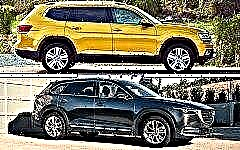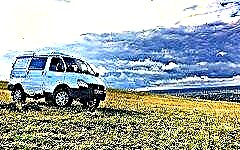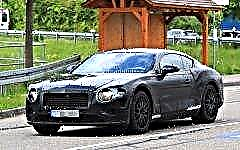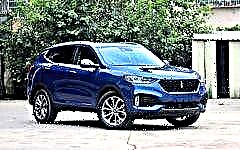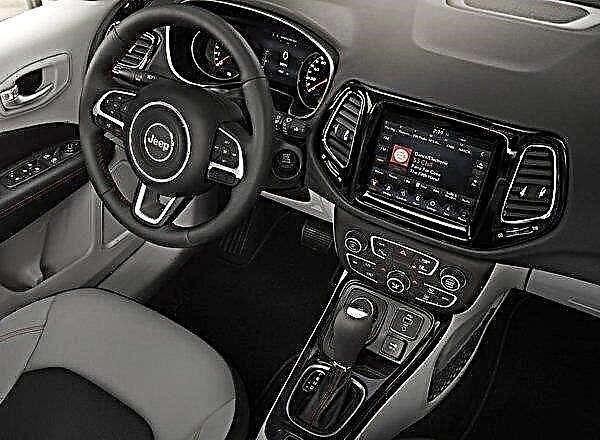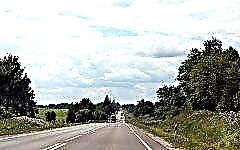
There is one correct phrase - good roads cost a lot of money, but bad ones cost more. The point is that the latter cause not only inconvenience, but also more accidents. It is very easy to lose control of a vehicle if there are potholes, bumps and dirt under the wheels.
Today we will drive along the roads of the Baltic States and Belarus and compare them, assessing the condition of the road surface, service level, traffic density and general comfort.
What awaits us in the Baltics

The three Baltic states - Estonia, Latvia and Lithuania - gained independence in 1991 and are tightly integrated into Eastern Europe. The region's status as an economic and cultural center, along with vast forests, sandy beaches and medieval town squares, attract visitors from all over the world. Add to this the hospitality of the locals and the commitment to traditional cultures and you have the recipe for an incredibly exciting road trip.
The Baltics is an unusual region. Locals argue which country is the best. The surest way to find out is to hit the road and decide for yourself.
Estonia, Latvia and Lithuania are members of the European Union, are in the Schengen area and use the euro currency, which means there is no need to use different documents or exchange money. And you don't need a 4X4 as the roads are in fair condition there. Is that for tourist road trips to protected areas.
Road infrastructure
Estonia
The smallest Baltic country in terms of area and population. All routes are accessible by car, bike or on foot. A great place to travel - the distances are short, the nature is diverse, the road network is constantly evolving. A real European gem.
Latvia

The second largest Baltic country. Latvian belongs to the same Balto-Slavic family as Lithuanian. Along with Estonia, Latvia is one of the greenest countries in the EU - about half of its area is forest.
Lithuania
It is the largest Baltic country in terms of area and population. Distinctive, unique and underrated. Organic food, medieval architecture, mass tourism - there is something for everyone. The roads are worse here, but you will feel safe on them too.
3 countries, 60 thousand kilometers of roads, over 6 million users. The road network is united into the Baltic Road Association. Lithuania and Estonia are represented in it by their own road administrations, Latvia is represented by the State Joint Stock Company "Latvian State Roads". Original studies, reviews and reports on road construction and improvement, improvement of engineering practices and safety are published by the international research "Baltic Journal of Road and Bridge Engineering".
The Road Association finances its publication and cooperates with three leading universities in the region: Vilnius Technical University. Gediminas (Lithuania), Riga Technical (Latvia) and Tallinn Technological (Estonia).
Since its inception, this association, in addition to its main functions, has served as a platform for Lithuanian, Latvian and Estonian scientists dealing with topical issues of road construction, repair and maintenance. Among its directions:
- research and design of roads and bridges;
- road building materials and technologies;
- road safety;
- road information technology;
- road climatology and environmental problems.
The greatest emphasis is placed on preventive maintenance. In particular, "category 1 defects" - potholes, which accelerate the destruction of the entire coating and pose an immediate danger to motorists.
All work is carried out under the supervision of the European Commission, which has drawn up a plan for changes in the entire transport system of the European Union. First of all, it is associated with NATO requirements, which include both improving the quality of roads and the legislative framework that simplifies the movement of transport between European countries, mainly military equipment. This has led to improved maintenance of trunk roads and cost-effective road construction and repair solutions.
From the point of view of the common user, this means excellent service of the main lines and mediocre service of the secondary ones. If you decide to get off the beaten track, be aware that the Lonely Planet and Rough Guide negatively regard the quality of the road surface and driving in the post-Soviet countries. Many routes are nothing more than dirt roads, and local drivers are not always well-mannered.
Features of the Baltic roads

All three states are quite close to Belarus and Poland, so there are many cars with Belarusian, Polish and Russian numbers on the road. You will come across in some areas a mixture of EU and Russian-style road signs, and of course, not all place names are duplicated in English, so it is better to google a little to find out the meaning of some obscure place names.
In a world where you need to constantly communicate, be it by phone, laptop or tablet, the Baltics guarantees convenience - many free Wi-Fi points, stable Internet and stable cellular communication. This is a haven for digital nomads and bloggers.
In addition to a comfortable pastime, in the event of a breakdown or accident, it will not be difficult for you to reach your friends or rescue services. Estonia, by the way, is home to great companies like Skype and Hotmail. Everything is digitized here, even things like healthcare and elections.
You might think that such a modernized region would not be rich in nature, but believe it or not, it is considered one of the greenest in the world. And if you've visited popular European places like Rome, Venice, Amsterdam or Vienna during the summer months, then you know how crowded they are with people and transport. But when you visit the Baltics, you don't need to worry about it - even in the capitals there are far fewer people here than in many other European centers. There are no toll roads for cars, no prohibitions - go wherever you want.
What motorists say about the Baltic roads

The network contains both positive and negative statements about the quality of roads in the Baltics. For example:
People got the wrong impression. There is absolutely nothing wrong or dangerous about driving anywhere in the Baltics. The quality of the roads is decent. Perhaps the roads are wider somewhere, and the drivers are more well-mannered, but in general the experience is no different from driving in Europe. The atmosphere here is calm and even strangely friendly.
;
There are small traffic jams and people are waiting in the side streets to get onto the main road. But those who are waiting are not nervous, and those who are driving on the main road often politely let you pass.
;
There are few people and almost no heavy traffic, so cars usually drive slowly.
;
On country roads, people often make stupid maneuvers with overtaking - this is frightening and unnerving.
;
Some roads are unpaved, but this does not mean that they are bad. Most are in good condition and you can drive safely at 80-100 km / h. They usually pass between villages. All roads between cities are paved
.
If we compare the three Baltic countries in terms of road quality, they are the best in Estonia - both paved and paved; Lithuania has a good paved highway network, but gravel roads are generally poor, especially in rainy weather.
Sadly, Latvia is in the worst position - with the exception of a few recently renovated main roads, you can even come across bumpy sections on main highways. But that shouldn't scare you - just watch the road and choose the appropriate speed.
What about Belarus?

Here, too, a lot of attention is paid to the development of land routes and transport infrastructure. Belarusian roads have become an example for some post-Soviet countries, and even the EU recognizes their good quality.
Nevertheless, road maintenance remains poor despite government efforts to develop it, as well as the collection of tolls on some roads (tariffs depending on vehicle weight and number of axles range from 0.04 to 0.145 euros per km). Pleasing with flat surfaces and some economic benefits, toll roads have added environmental concerns due to heavy traffic and maintenance difficulties.
Obviously, the quality of the roads depends on the money. “Of course, our roads can compete with German ones,” says Sergei Chizhik, a member of the Belarusian National Academy of Sciences. - However, do you know how much money you need? Each kilometer of Belarusian roads costs about three million US dollars - a huge amount, but in Germany it is three times more!
According to Belstroytsentr, the country uses more than 86,000 km of roads, including 16,000 km of main roads, for the daily movement of trucks and cars. "German modernization" alone will cost $ 140 billion - a tenth of our annual budget. "
The state of the roads is not ideal, however, according to the latest polls, 62% of Belarusian respondents are satisfied with it. It has the highest rate in the region, including its EU neighbors, Poland and Lithuania - Belarusian roads are recognized as cleaner and safer.
You can stay there alone at night, while in other countries you risk losing fuel or tires while sleeping.
- say the truckers.
But the quality of service remains low. Potholes come across here and there; parking spaces, motels, cafes, showers and toilets are concentrated near major cities and highways, and in the regions you can drive a hundred kilometers before you reach a service station. But in general, there are no more problems than elsewhere. Some tracks are so good that motorists can drive on them with great speed, and they do it with pleasure.
Notable features of road traffic in Belarus:
- speed limits: built-up areas - 60 km / h, unless otherwise specified; outside settlements - 90 km / h, highways - 110 km / h;
- the alcohol limit for drivers is zero (including beer);
- speed cameras and police traps are everywhere;
- most road signs are written only in Cyrillic (not Latin).
Here are some general tips for traveling by car in the Baltics and Belarus:
- pointers to villages, cities, landmarks, etc. may be confusing, so use a detailed map, familiar navigation system, or route apps on your phone;
- the roads in remote areas are just gravel paths, terribly dusty in fine weather and muddy in the rain;
- along the corridors between cities, you may not see gas stations for a long time, and those found may not provide the services (or be open around the clock) that you expect;
- flash floods are common in cities in summer, and road drainage is not very good. Be careful when parking your car - water quickly forms deep puddles;
- There are strict rules on drunk driving, but while drunk drivers are rare, there are always disciplinary offenders.
Conclusion
It is difficult to say where the roads are better - both the Baltics and Belarus have their own shortcomings, but in general the road networks are getting good marks. In the mornings you can see workers and garbage trucks, so you know that the local authorities put a lot of effort into keeping the roads in good condition.
For lovers of the wilderness, there are bus and bike routes. Secondary roads are usually unpaved, but they are not a problem if you are ready for rough terrain.
When it comes to driving manners, in the Baltics, drivers are the calmest and most respectful of speed limits. In Belarus, you can often see aggressive racers who ignore speed limits and overtake in dangerous situations.
But again, you have nothing to worry about - most drivers abide by the rules, and if you do that too, you'll be safe and enjoy the ride.

|| list |
- What awaits us in the Baltics
- Road infrastructure
- Features of the Baltic roads
- What motorists say about the Baltic roads
- What about Belarus?



